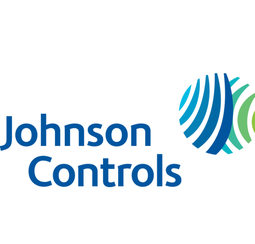下载PDF
Smooth Transition to Energy Savings

适用行业
- 金融与保险
适用功能
- 设施管理
挑战
该建筑配备了四台报废的特灵水冷式冷水机组,位于地下室。江森自控安装了四台约克水冷离心式冷水机组,配备单元式变速驱动器,总装机冷却能力为 6.8 兆瓦。每台冷水机组的容量为 1.6 兆瓦(根据冷凝器水温变化至 1.9 兆瓦)。江森自控需要以适合现有工厂区域和工厂通道的尺寸限制以及客户的特定性能要求的方式设计设备。摩根士丹利要求冷水机组与建筑负载曲线相匹配,在需要时调低以匹配低负载要求,并在整个运行范围内提高能效比。其他要求包括降低冷水机组的噪音水平以改善机房的工作环境,以及宽广的运行范围以及智能控制,以允许流量和温度的可能变化。后者需要在不同的安装阶段利用减少的机器数量来增加容量,并允许未来增强可变初级流量系统。
客户
摩根士丹利
关于客户
摩根士丹利是一家全球领先的金融服务公司,提供广泛的投资银行、证券、投资管理和财富管理服务。该公司的员工为世界各地的客户提供服务,包括公司、政府、
解决方案
江森自控签订了更换四台报废水冷式冷水机组的合同,这些冷水机组为摩根士丹利在伦敦金丝雀码头的一个办公室提供空调。由于公司运营的性质,该建筑将在整个项目期间保持全面运营,为居住者和技术提供支持。因此,需要分阶段更换冷水机组。江森自控提供了一个量身定制的交钥匙解决方案,由四台约克水冷离心式冷水机组组成。选择并设计了该设备,保守估计每年可节省 3 万英镑的能源成本。
数量效益
相关案例.

Case Study
Real-time In-vehicle Monitoring
The telematic solution provides this vital premium-adjusting information. The solution also helps detect and deter vehicle or trailer theft – as soon as a theft occurs, monitoring personnel can alert the appropriate authorities, providing an exact location.“With more and more insurance companies and major fleet operators interested in monitoring driver behaviour on the grounds of road safety, efficient logistics and costs, the market for this type of device and associated e-business services is growing rapidly within Italy and the rest of Europe,” says Franco.“The insurance companies are especially interested in the pay-per-use and pay-as-you-drive applications while other organisations employ the technology for road user charging.”“One million vehicles in Italy currently carry such devices and forecasts indicate that the European market will increase tenfold by 2014.However, for our technology to work effectively, we needed a highly reliable wireless data network to carry the information between the vehicles and monitoring stations.”

Case Study
Safety First with Folksam
The competitiveness of the car insurance market is driving UBI growth as a means for insurance companies to differentiate their customer propositions as well as improving operational efficiency. An insurance model - usage-based insurance ("UBI") - offers possibilities for insurers to do more efficient market segmentation and accurate risk assessment and pricing. Insurers require an IoT solution for the purpose of data collection and performance analysis

Case Study
Automated Pallet Labeling Solution for SPR Packaging
SPR Packaging, an American supplier of packaging solutions, was in search of an automated pallet labeling solution that could meet their immediate and future needs. They aimed to equip their lines with automatic printer applicators, but also required a solution that could interface with their accounting software. The challenge was to find a system that could read a 2D code on pallets at the stretch wrapper, track the pallet, and flag any pallets with unread barcodes for inspection. The pallets could be single or double stacked, and the system needed to be able to differentiate between the two. SPR Packaging sought a system integrator with extensive experience in advanced printing and tracking solutions to provide a complete traceability system.

Case Study
Transforming insurance pricing while improving driver safety
The Internet of Things (IoT) is revolutionizing the car insurance industry on a scale not seen since the introduction of the car itself. For decades, premiums have been calculated using proxy-based risk assessment models and historical data. Today, a growing number of innovative companies such as Quebec-based Industrielle Alliance are moving to usage-based insurance (UBI) models, driven by the advancement of telematics technologies and smart tracking devices.

Case Study
MasterCard Improves Customer Experience Through Self-Service Data Prep
Derek Madison, Leader of Business Financial Support at MasterCard, oversees the validation of transactions and cash between two systems, whether they’re MasterCard owned or not. He was charged with identifying new ways to increase efficiency and improve MasterCard processes. At the outset, the 13-person team had to manually reconcile system interfaces using reports that resided on the company’s mainframe. Their first order of business each day was to print 20-30 individual, multi-page reports. Using a ruler to keep their place within each report, they would then hand-key the relevant data, line by line, into Excel for validation. “We’re talking about a task that took 40-80 hours each week,” recalls Madison, “As a growing company with rapidly expanding product offerings, we had to find a better way to prepare this data for analysis.”

Case Study
Detecting and Reducing Cost of Fraud Rings
A leading insurer wanted to reduce its multi-billion dollar expenditures on auto insurance claims, which is its largest annual expense. Currently, the company avoids paying out only about 0.33% of the predicted 10% of fraudulent claims. The insurer uses both manual (60-65%) and automated systems (30-35%) to flag questionable claims. These claims are passed on to the investigative case managers who read adjuster and other member notes, explore the fraud watch list, and search the web. Their existing approach cannot easily discover fraud rings or, more importantly, collusion among other fraud rings. Moreover, the investigative team typically decides in 30 days or less on whether to pay or deny a claim. This is due to heavy caseloads and expectations for a quick turnaround in claim processing in order to keep customers satisfied.





